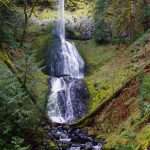by John Sparks, Newsletter Editor, Trailkeepers of Oregon Distance: 8.2 miles one-way Elevation gain: 1,550 feet The Clackamas River Trail is a perfect December outing as the area should be snow-free but less visited and the old-growth groves…
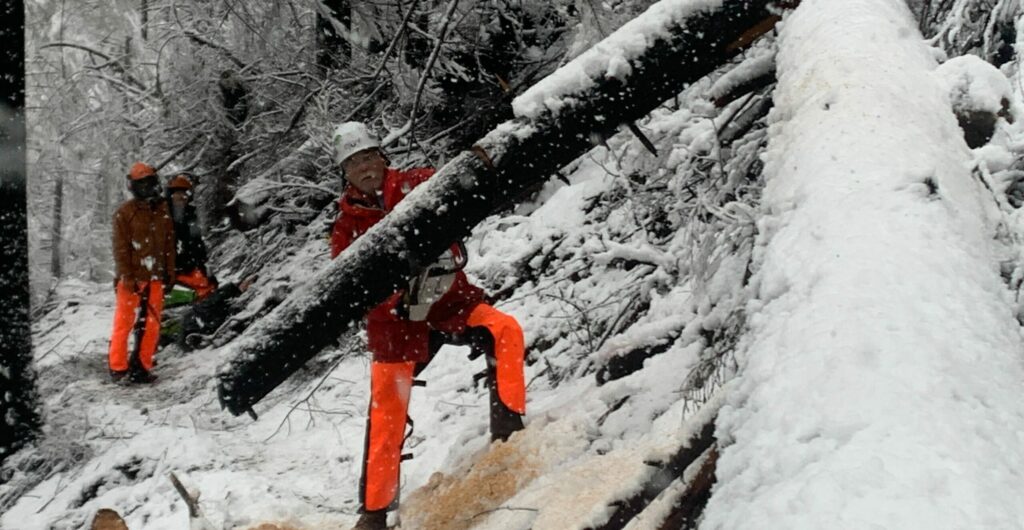
TKO and Forest Service staff scout and remove logs on the Clackamas River Trail during the winter.
Since cutting their saw teeth after the Eagle Creek Fire in 2017, TKO Volunteers have (unfortunately) gotten really good at using their skills to recover trails from wildfire. Mt Hood National Forest has engaged TKO to help in the rehabilitation of the Clackamas River Trail, a popular hiking destination within the Mt Hood National Forest. The entirety of the 7.5 mile trail—and more importantly the cliffs and slopes above it—suffered high severity burns in the 2020 Riverside Fire. It also suffered from the same windstorm that fueled the fire, though of course the damage is intertwined. Fifteen months of rain, snow, freeze/thaw, and torpedoing windfalls onto fractured cliff faces, hydrophobic soils, and steeply-inclined and loose talus have left us an extremely challenging and dangerous rehabilitation challenge. We thought we’d take this opportunity to share some of the hazards TKO and Forest Service crews will be managing as they work in this fire affected area.
High rockfall risk
This area features many steeply inclined talus slopes beneath fractured bands of basalt cliffs. Wildfires remove much of the sparse plant life that holds these large chunks of the cliffs in place, making them unstable and primed to fall at any time.
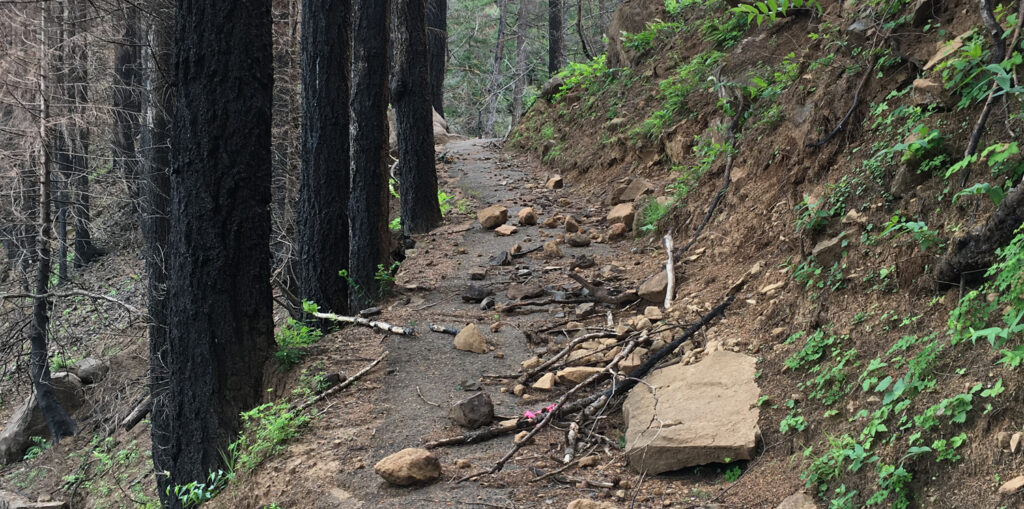
Example of rock fall on the Multnomah Falls trail. Photo by Susan Schen
High windfall risk
The fire caused >90% tree mortality, and hundreds of those dead trees are still standing. These trees can fall at any point, without warning. This means even a slight breeze can make an area of the trail with high tree mortality too unsafe to work in.
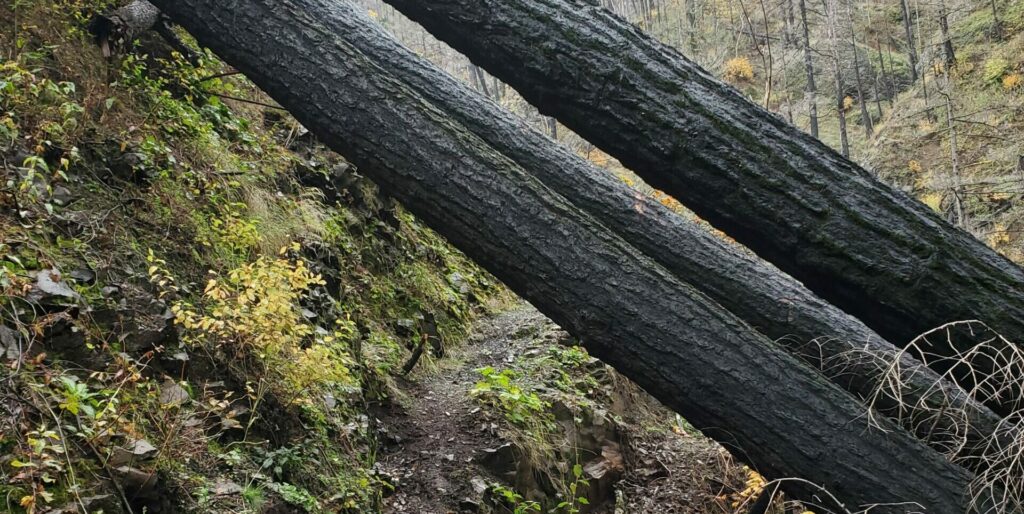
An example of windfall in the Columbia River Gorge. Photo by Guy Hamblen.
Rockslide and debris flow
Many of the talus fields and drainages suffered slides and debris flows. Oftentimes the flows came to a sudden or gradual stop behind an object—usually a fallen tree—creating a dangerously-perched reservoir of material. The removal of the ‘dam’ will cause the material to slide. Oftentimes, simply walking across these backed up slides will trigger the slide to collapse further—this is especially true with wet rock. Occasionally the chain reaction of the sliding material will trigger additional material to come down from above. The debris flows are especially dangerous, as scree is bound with mud, boulders, roots, and whole trees. Watch the video below for an on-the-trail example of a debris flow.
Slide scars
These are instances when a debris flow came down a slope with such force it scoured the hill down to mineral clay. With the trail bench blown-out, either structures will need to be created to support a new bench or the bench will need to be re-established by digging into the sheer hill side. Either way, slip/fall potential is high.
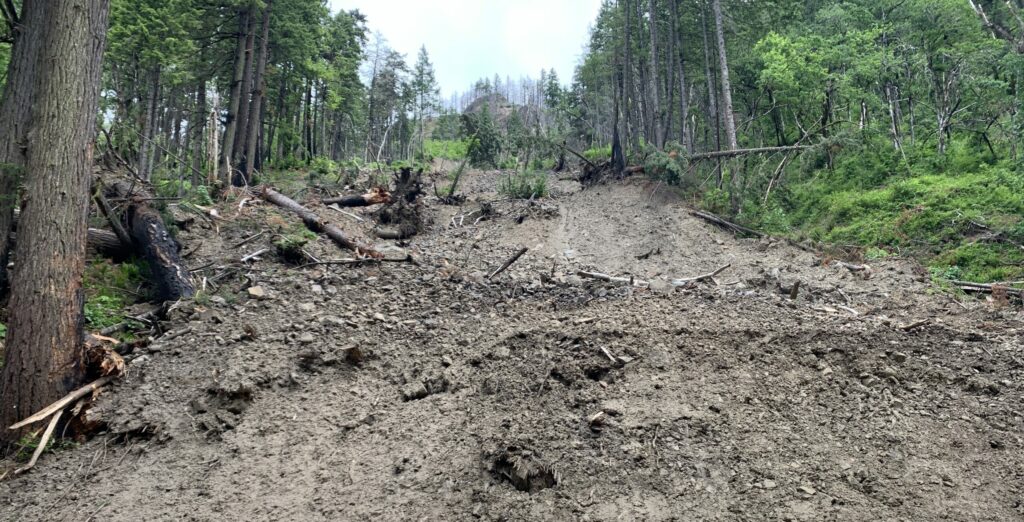
An example of a slide scar in the Columbia River Gorge. Photo by Josh Durham.
Severe exposure
These are areas of the trail where slipping could send one off cliffs into the river. With much of the plant life burned out by the fire, the edges of exposed parts of the trail are extremely unstable and an unwary step could lead to a very bad fall.
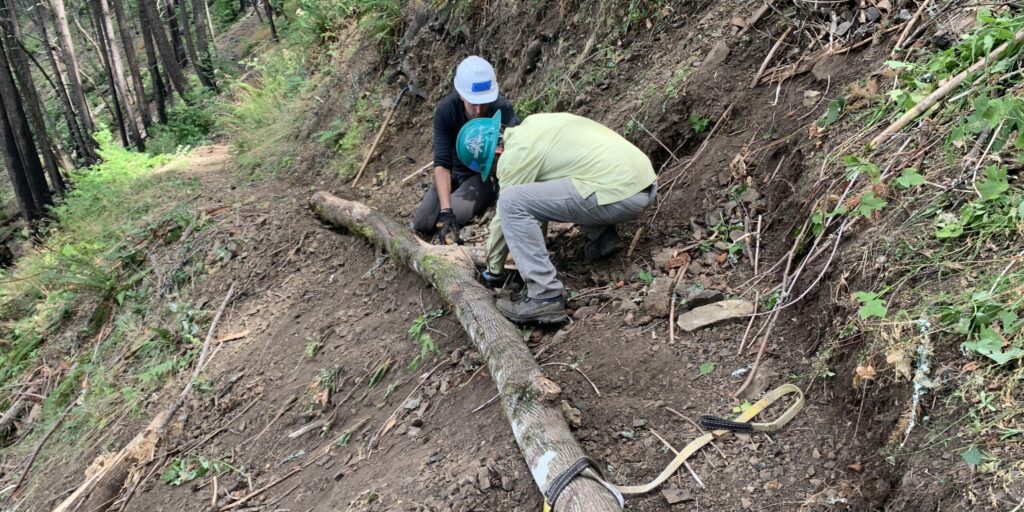
These volunteers are working on a highly exposed section of trail. Photo by Josh Durham.
The safe mitigation of all of these dangers calls for certain measures and special skillsets. Here’s a few of the tools TKO volunteers will be utilizing as we work to repair this trail.
Advanced and updated safety policies
All crews will adhere to an updated Risk Assessment created by the US Forest Service which details specific risks, abatement procedures, and “safety trigger points” in which work will cease. These trigger points include many of the factors described above. (windspeed, rainfall, etc.)
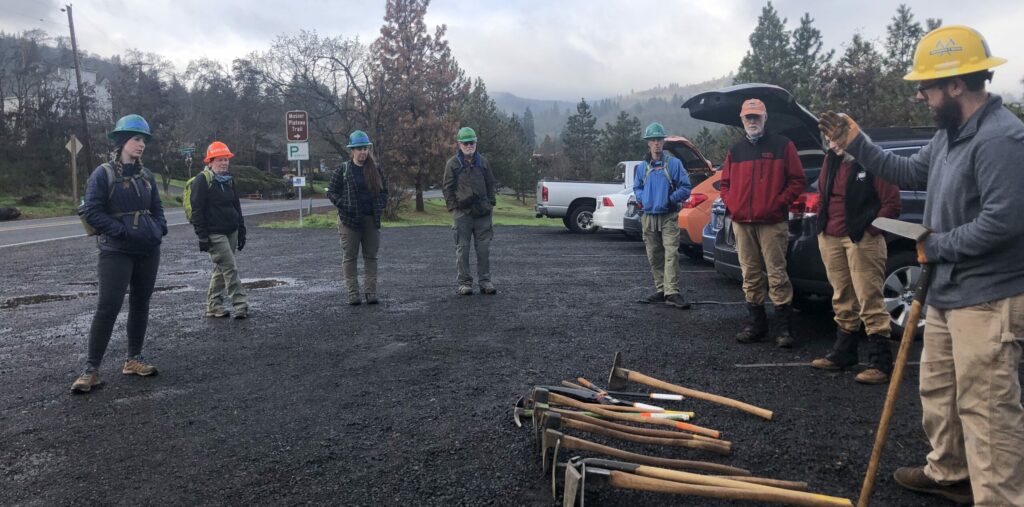
All TKO crews begin the day with an in depth safety talk. Photo by Natalie Ferraro
Experienced volunteers
Initial ventures into the fire closure area will only be done with small crews of highly trained and experienced TKO volunteers and staff who have explicit Forest Service permission to do work in the area. Much of this work—especially coming from the Fish Creek trailhead—will be of the “only one person at a time, creating a level trail platform from which to slowly work their way forward through the debris flow” variety. In these specific landscapes, teams will have to be skilled in saw, rigging systems, and tread tool work, as all of these skills may be called on in a 20ft section of damaged trail. The approach from the Indian Henry campground trailhead appears less perilous—though still dangerous!—and can be managed by intermediate-advanced volunteers.
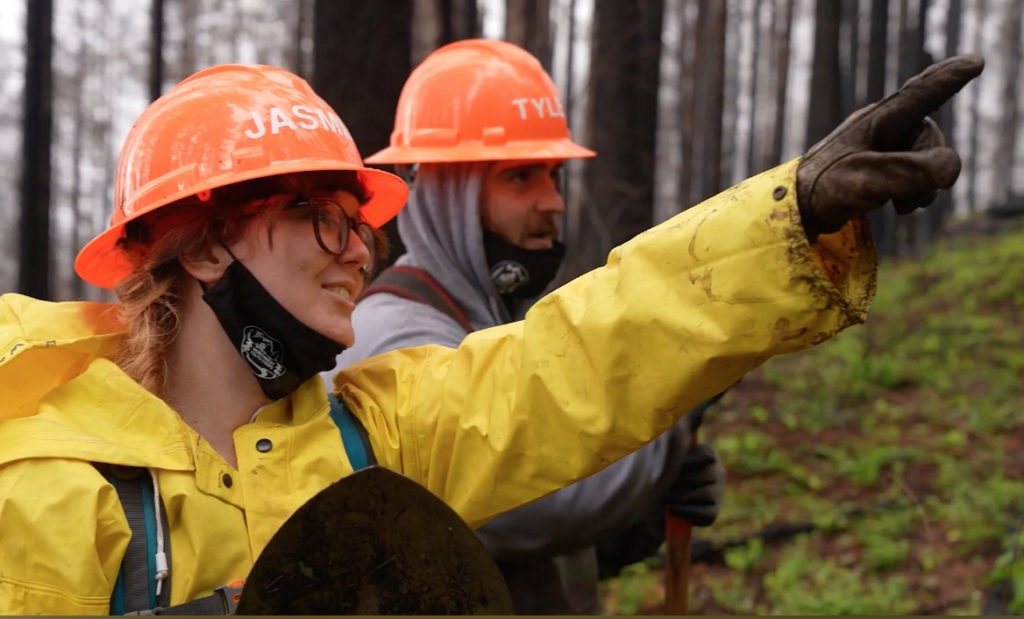
Trained TKO interns asses a fire affected area for hazards. Photo by Steve Kruger.
Once these initial safety concerns are addressed, we hope to hold trail parties that are open to the general public on the CRT for more volunteers to join. Stay tuned for future events and blog posts on the topic!
Projects like these are only possible thanks to our generous supporters who donate their time and money to serve Oregon’s trails. This week, when you give a gift to support TKO’s work, you’ll also be entered to win some fantastic prizes! Check out our Legacy Builder’s campaign for full details.

